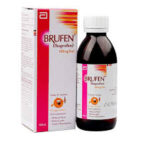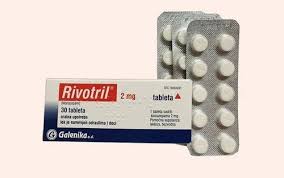Lexotanil is a brand name for a medication that contains the active ingredient bromazepam, which is a type of benzodiazepine. Lexotanil is used primarily for its anxiolytic (anxiety-reducing) properties. Here’s a detailed description:
- Appearance: Lexotanil tablets are typically small, round, and may be imprinted with the dosage strength on one side. The color can vary, commonly white or off-white.
- Composition: Each tablet of Lexotanil contains bromazepam. The usual strengths are 3 mg or 6 mg per tablet. Inactive ingredients might include fillers, binders, and colorants.
- Mechanism of Action: Bromazepam, like other benzodiazepines, works by enhancing the effects of a neurotransmitter called gamma-aminobutyric acid (GABA) in the brain. GABA has inhibitory effects on the nervous system, which helps to reduce excessive nerve activity, leading to its anxiolytic, sedative, muscle-relaxant, and anticonvulsant effects.
- Indications: Lexotanil is prescribed for:
- Anxiety Disorders: To manage symptoms of anxiety, including generalized anxiety disorder (GAD) and anxiety associated with stress.
- Panic Disorders: For the short-term management of panic attacks.
- Insomnia: Occasionally used to help with sleep disturbances related to anxiety.
- Dosage: The dosage of Lexotanil varies based on the condition being treated and the patient’s response. Typically, the initial dose may be 3 mg to 6 mg daily, which can be adjusted based on clinical response and tolerability. It is usually taken orally, divided into two or three doses throughout the day.
- Side Effects: Common side effects may include:
- Drowsiness: Feeling unusually tired or sleepy.
- Dizziness: Light-headedness or unsteadiness.
- Muscle Weakness: A feeling of muscle fatigue or weakness.
- Gastrointestinal Symptoms: Such as nausea or constipation.
- Precautions:
- Dependence and Withdrawal: Prolonged use can lead to physical dependence and withdrawal symptoms if the medication is stopped suddenly.
- Mental Health Conditions: Use with caution in individuals with a history of depression, suicidal thoughts, or substance abuse.
- Pregnancy and Breastfeeding: Should be used with caution in pregnant or breastfeeding women, as it can affect the fetus or infant.
- Interactions: Lexotanil can interact with other medications, such as:
- Other CNS Depressants: Including alcohol, opioids, or other sedatives, which can enhance sedative effects and increase the risk of respiratory depression.
- Antidepressants: May have additive effects with certain antidepressants, increasing the risk of side effects.
- Administration: Lexotanil tablets should be swallowed whole with water. It is important to follow the prescribed dosage and not to exceed the recommended dose to avoid potential side effects and complications.
Lexotanil is effective in managing anxiety and related symptoms, but it should be used under medical supervision due to its potential for dependence and interactions with other substances. Regular follow-up with a healthcare provider is recommended to monitor effectiveness and adjust the dosage as needed.























































